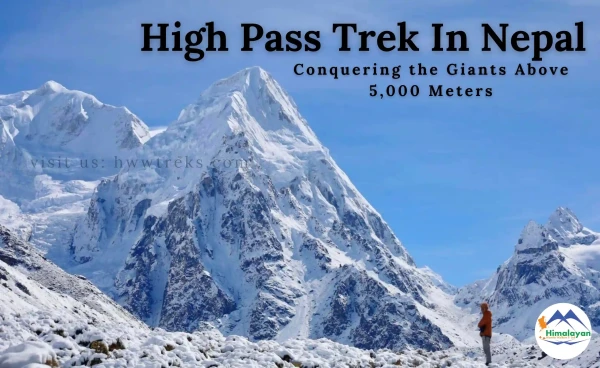- 05/19/2021
- Tags: Festivals of Tibet
- Himalayan Wander Walkers
Major festivals and events of Tibet
Resplendent Tibet is a dream destination for all travel lovers out there in the world. The travelers are always captivated by the pristine blue sky, lakes, Holy Mountain, and the dramatic landscape where the quaint Tibetan culture still exists. The roof of the world, Tibet has a unique culture, language, and history date back to 1300 years. Most of the festivals are relevant to Buddhist religious practices.
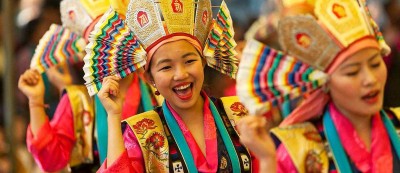
Tibet offers a lot to visitors in the context of cultural attractions to make their vacation unforgettable. Traveling to Tibet during the great events is the best way where you will deeply understand the essence of its culture and the gratifying trip. To assist your visit to Tibet during the exhilarating events please let us know, we will keep you update with the latest events happening in Tibet for your rewarding trip.
There is a number of festivals celebrated throughout the year in different areas of Tibet Autonomous Region. It is redundant to list all the festivals celebrated in Tibet but the most popular events are explained below like Losar, Saga Dawa, Shoton (yogurt festival), horse riding, etc.
Contents [hide]
Losar (Tibetan New Year)
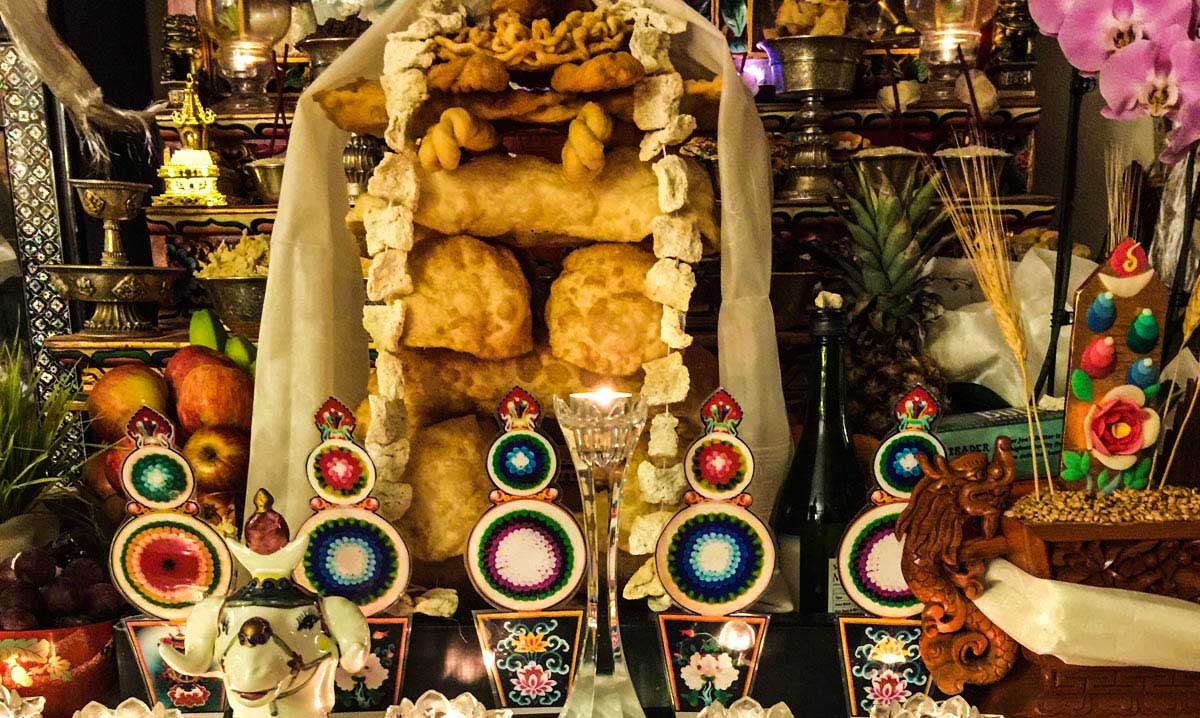
Losar is a Tibetan new year, the greatest festival in Tibet. The word ‘Lo’ means “Year” and ‘Sar’ means “New”. This festival is widely celebrated in Tibet and beyond like in Nepal, India, Bhutan, and Pakistan. Everyone takes part in the celebration by forgetting the past and enjoying the present to the fullest. Perfect time for a demonstration of the folk tradition of Tibet where people participate in festivities, taste the delicacies with friends, family, and relatives. In every home decorations of Khabse (Tibetan cookies), fruits and others are placed in their prayer room or living room. Remember that you will not find champagne to celebrate in Losar. Instead, you will find Chang (local wine made from barley or wheat) for drinks. Actually, the Losar celebration was started in the early time by the Bon religion during the reign of the 9th Tibetan King, Pude Gungyal. Later on, Buddhism flourished in Tibet and the celebration of the Losar festival was adapted by monks and Tibetan people.
Losar lasts for 15 days, starting from the first day of the first month of the Tibetan year. The 29th day of the last month of the lunar calendar (second last day of the 12th month) is known for Guthuk day. Guthuk is a special dish that is prepared from more than nine ingredients like wheat, maize, nuts, peas, etc cooked with soup. Inside the dish, there are small dumplings that are filled with some paper written with salt, chilly, cotton, pebble, and black paper. Each title represents different meanings like one who finds salt consider lazy, chilly as talkative, cotton means light-hearted or kind, pebble means good luck and black denote the black heart or cruel.
The first day Losar of the first month of the lunar calendar is considered as the most important day where family members do rituals and enjoy within the house and don’t visit others' homes.
The second day Losar is more about visiting Monasteries to offer butter teas to monks and butter lamps.
The third day Losar is for people’s Losar. In the past, people visit the King in the palace with offerings of food items.
Besides the normal Losar, there is Sonam Losar also which is celebrated by farmers a month before Losar. Because the farmers are already busy with agricultural work during the first month of the Tibetan year.
Shoton Festival (Yogurt Banquet Festival)
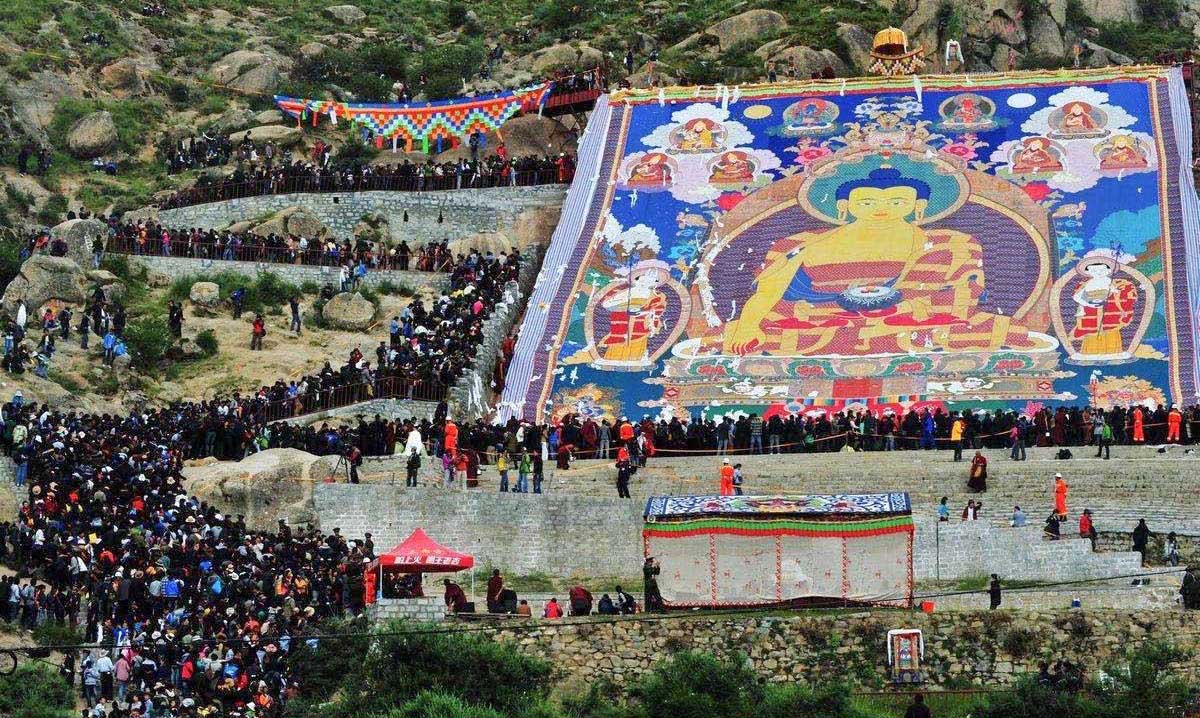
Shoton is one of the liveliest and biggest public event festivals of Tibet where the 500-square-meter embroidered gigantic painting of Sakyamuni Buddha is display on the hillside behind the Drepung Monastery with the support of hundreds of monk and local volunteers. The ceremony opens with the ritual performed by monks and the pilgrims from the nomadic area offer a Yak Yogurt to all the monks. So, this festival is also known as the Yogurt festival for international tourists.
Shoton held in Lhasa every year of the midsummer from the 15th to 24th of the 5th lunar month after the summer retreat, the monks are not allowed to go out of the monastery periphery to avoid insects killing while walking on the ground. According to the English date, it happens in the month of August.
For the next few days, locals gather at Norbulingka (summer palace of Dalai Lama) for the grand picnic and the Tibetan Lhamo Dance (Opera) show. Everyone dressed in cultural attire and participates in an ethnic song and dance performance. This is one of the best summer breaks for all Tibetans to enjoy with friends, family, and love ones to the fullest.
Saga Dawa (Fourth month of Lunar calendar)
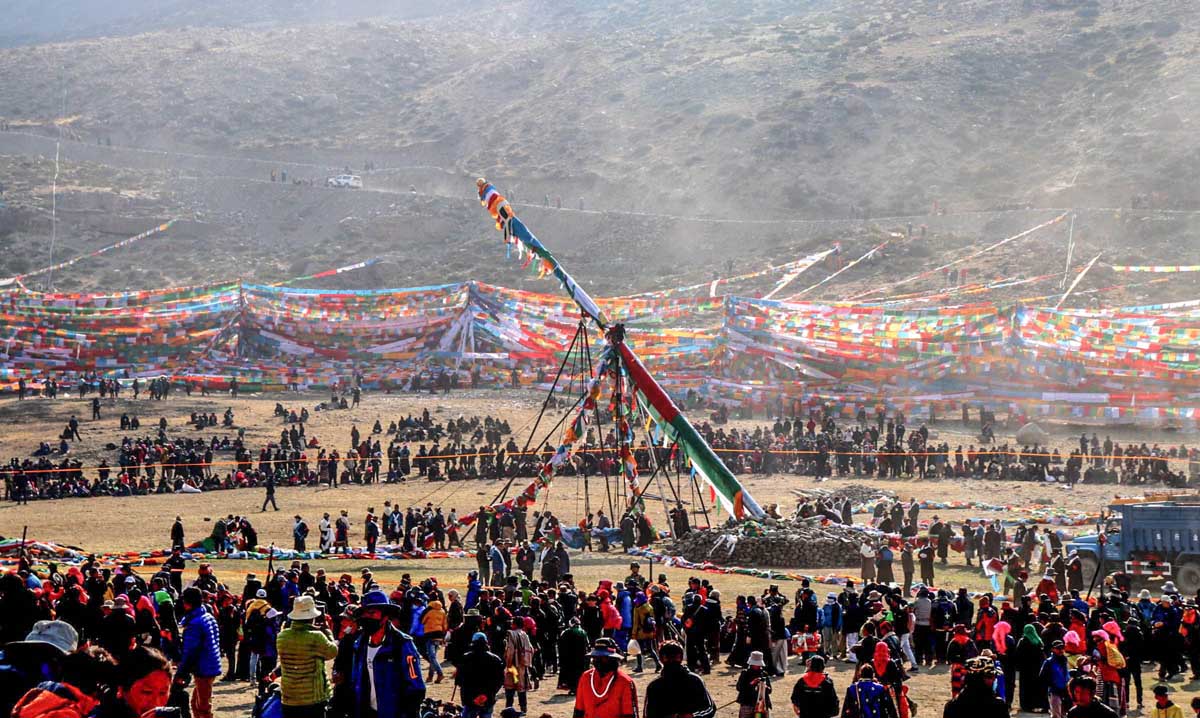
Literary, Saga is the name of the 4th month of the lunar year and Dawa means month. Saga Dawa is a religiously popular and widely celebrated festival of Tibet and other Buddhists in the Himalayan region of India, Nepal, and Bhutan. The 15th day of the 4th month of the Tibetan calendar marks an auspicious day for all Tibetan Buddhists when the Gautama Buddha was born, enlightens, and attained Nirvana on the same day.
During this significant time, Tibetan people and monks are busy earning merit by chanting prayers and making Kora (circumambulate) to Monasteries, Stupas, and Mount Kailash. It is believed that if you do good karma this month then you will have double merits than usual. Because of that people turn in more merciful by offering butter lamps, donating alms to poor people, and releasing the lives of domestic animals for free. Many of the Buddha’s devotees even avoid consuming meat and stay vegetarian for the whole month.
This is a perfect time to experience the holiest month of Tibet for international tourists. The tall praying pole is erect at Darchen during this festival where thousands of pilgrims from Tibet and overseas visit mount Kailash for religious purposes and tourists to experience.
Monlam Chenmo (Great prayer festival)
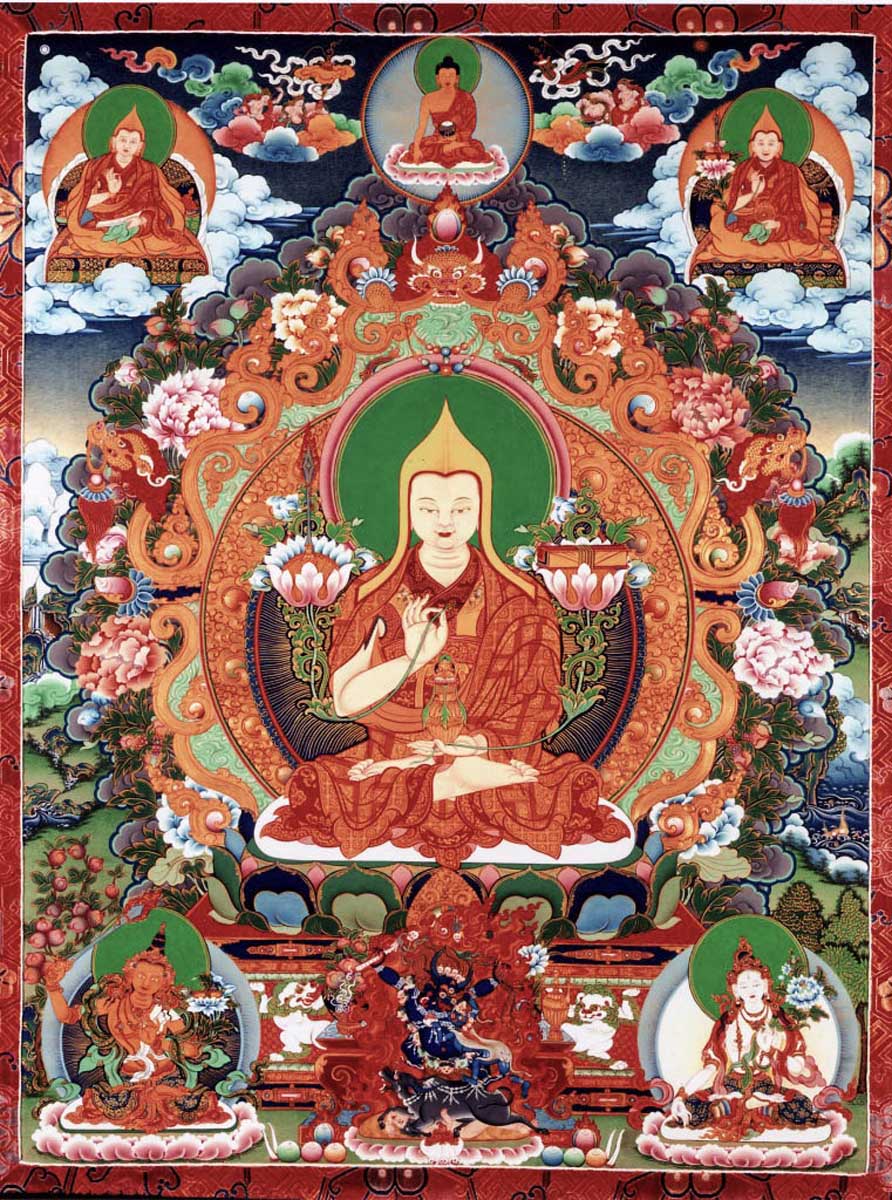
The event of this Monlam prayer is the most important Tibetan Buddhist celebration in Tibet. It is held on the 4th -11th day of the first month of the lunar calendar right after the third day of the Losar celebration. The simple translation of two words Monlam and Chenmo meaning to prayer and great respectively. Thus, the Monlam Chenmo event is also known for its great prayer festival in English.
Monlam Chenmo was first established by popular Tibetan Buddhist teacher, Je Tsong Khapa of the Gelugpa sect in 1409. Later when the second Dalai Lama (Gedun Gyatso) became an abbot of the Drepung monastery in 1517 and he revived the great prayer festival by collaborating with the monks from the three biggest Gelugpa sect monastic university of Tibet.
The celebration of Monlam Chenmo is the Buddhist way of helping others through the prayers that commemorate the Buddha’s Miracle day (enlightenment). The prayer is actually done for world peace and prosperity of all sentient beings of six realms. Monks, nuns, and ordinary people gathered at the heart of the Lhasa, the Jokhang temple, and chanting prayers and performing rituals for the long life of great lamas and spreading the Dharma to generate peace and harmony.
Dzam Ling Chipsang (incense offering festival)
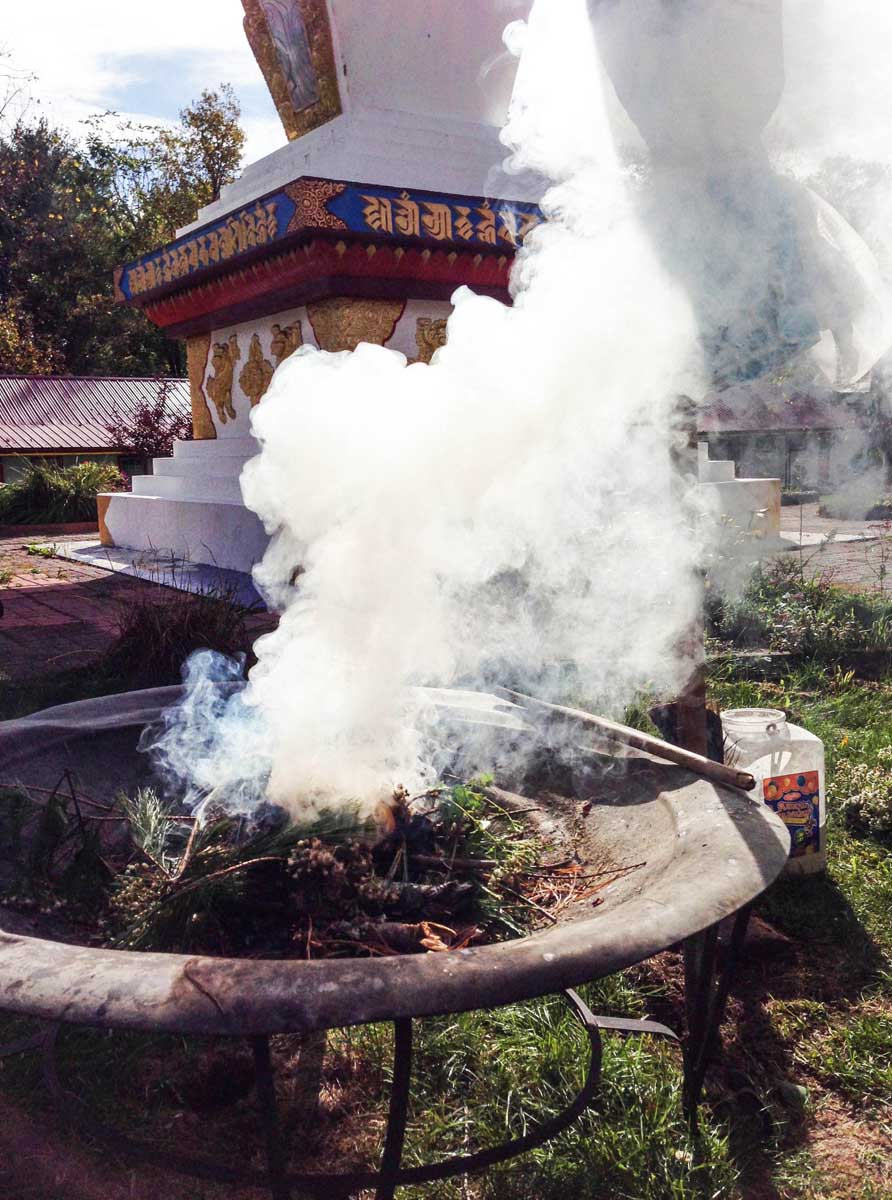
Dzam Ling Chisang or Zabling Chisang is a religious festival celebrated in Tibet on every 15th day of the fifth month of the Tibetan calendar. Usually, it falls in the summertime between July and August. The word Zablin means world and Chisang means cleansing everything. Internationally it is known for universal incense offering day. People climb to the high hills or peaks to hang Lungta (praying flags) and offer incense for spiritual cleansing. This celebration commemorates the Tantri Master Padma Sumbawa (Guru Rinpoche) conquering the spirits and obstructive deities to flourish Buddhism in Tibet.
During the reign of King Songtsen Gompo, there was Bon religion. In the construction of the Samye monastery, the spirits destroy the buildings every night after the full day of work done by people. Later on, the King invited Guru Rinpoche to Tibet from India. Guru killed the demons and converted the deities to protectors. Finally, the Samye monastery was founded as the very first Buddhist monastery in Tibet. People celebrate incense offering festival as a victory over suffering from demons and spirits and to pray for peace in the world.
Horse Riding Festivals of Tibet
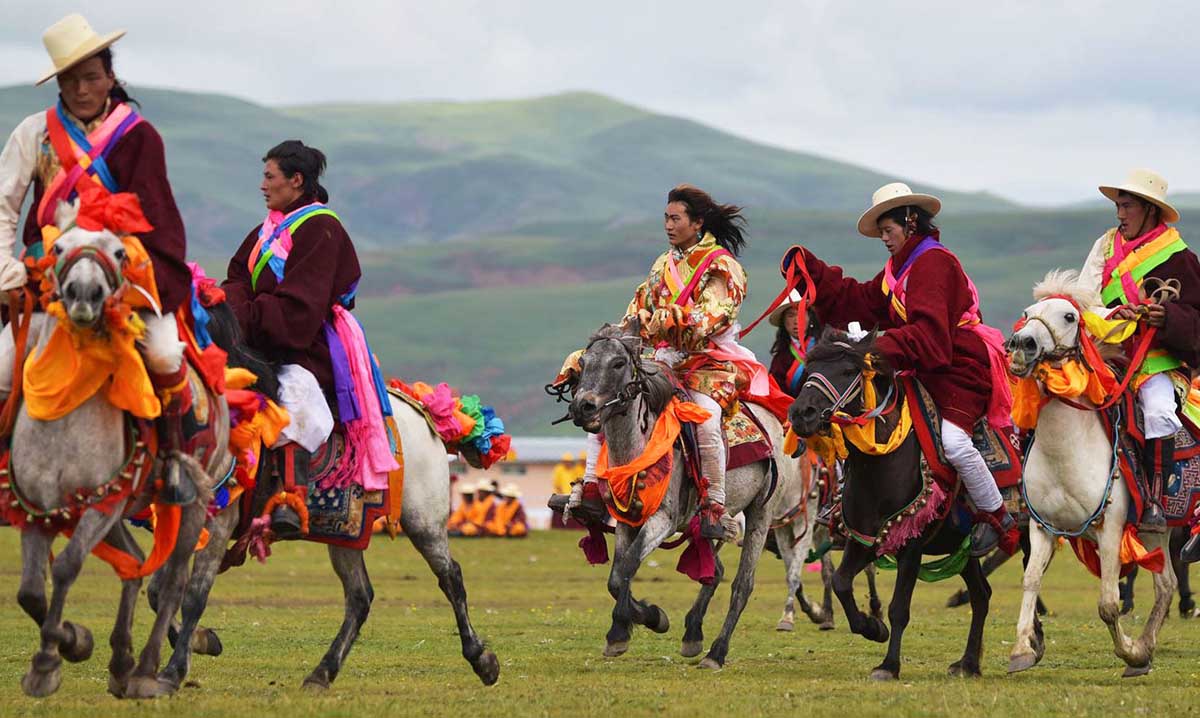
Summer is the best time in Tibet to travel where the weather supports your journey and celebration of the outdoor festivals held in different places. Horse riding is a Kentucky Derby of Tibet like a Yartong festival in Upper Mustang. People gather at the venue from cities, villages, and even from the nomadic places. This festival held in an open ground where the people stay in tents. The event celebrates by organizing competitions of horse or yak racing, wrestling, and archery. People participate by watching and cheering the horse riders and organizing the exotic trade fair where the people exchanging goods with other goods. The main purpose of this festival is a theme to promote the economy through cultural events. One can experience the folk tradition of Tibet and do the shopping for some handicrafts and other souvenirs. Himalayan Wander Walkers have identified 4 major horse riding festivals in Tibet.
- Gyantse Horse racing (Gyantse Damar Festival)
Gyantse lies on the popular tourist route to Kailash, Lhasa, and Nepal via the Kerung border. The festival or horse riding in Gyantse is called Gyantse Damar Festival. This festival is held after the full moon day of Saga Dawa(4th month of Lunar Calendar). - Nagqu Horse Racing
Nagqu’s straight meaning to black water. It lies 320 km away from Lhasa in northern Tibet and popularly known for its green pasture where the nomadic life can be seen. During the festival, the wide grassland turns into a beautiful with the decorations of colorful praying flags and the white traditional tents. It held in august and lasts for 3 to 7 days. Nomadic folk dance and tugs of war are highly performed in a big group. - Lithang Horse Racing Festival
Litang is a popular town in the history of Tibet, lies in Sichuan Province at an elevation of 4,000 meters above sea level higher than Lhasa. Khampa and nomadic people dressed in their finest attire and gather in town for celebrating the festival by performing a traditional dance, horse riding, and fashion show. These events fall in august every year and last for the week. - Yushu Horse Racing Festival
Yushu lies in the southern Qinghai province of the northern Tibetan plateau. Normally the Yushu horse riding festival held between mid of July to mid of august. The activities that we can experience are similar to other horse riding festivals. It is worth to experience any of the four which offer you a lifetime memory.



